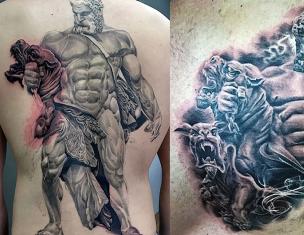The most frustrating thing about being a sales manager is when it comes to price. Both parties, seller and buyer, understand: the first needs to sell at a higher price (his salary depends on this), the second needs to buy cheaper (who doesn’t want to save money!?).
When a manager starts bargaining, the main thing for him is, no, not particularly vague, but self-confidence. The client loves confident people. This can be seen in an example described in Dale Carnegie's excellent book, How to Stop Worrying and Start Living. If you are a manager, be sure to read it, you will understand the secret. In the meantime, a few more secret techniques on how to win a client over to your side.
1. "Sandwich"
“Stirlitz knew, the last word is remembered.” This is true, but so is the first one. Therefore, by naming the price in the middle of the product presentation, at least you will get a loyal reaction from the client. And also, first tell the price without a discount. And then: “But today, on the occasion of such a big holiday, February 30, especially for you...” and name the discounted price. Or: “For this price you will receive not only (the product), but also (list bonuses).2. "Buy"
From now on you forget this word. “Buying” means parting with your hard-earned money, and oh, how no one wants that! Convince the client that he is not spending money, but investing. At worst, you can use the word “acquire”. But just don’t buy it!3. "Fork"
This technique suggests giving the buyer a choice. Agree, it’s always nice to choose. In this way, you put the client not in front of the “buy or not buy” dilemma, but in front of the right to choose. Feel the difference! Say the range of prices for goods or services, but start with the highest. Don't assume that the client will prefer the most low price! Usually a golden mean is chosen.4. "Dollarization"
This is a subtle technique, using which you convince the client that he is not spending money, but, on the contrary, earning, investing or saving. For example: “With the installation of our windows, you will save 25% on heating your apartment. Because….(and then went on to list the advantages of your product or service).5. Price division
Everything is simple here. The price is quoted, say, not for the entire apartment, but per square meter. The cost of a six-month subscription to a club is not for the entire six months, but only for one month. If you have a set or set of goods, then indicate the price not for the entire set as a whole, but for one unit of goods. At the same time, it is not forbidden to casually point out the shortcomings of a competing company and highlight the advantages of yours.Happy trading! 
Previously, we wrote about such a tool for communicating the cost of goods to the client as. This article will consider an equally effective tool called the sandwich method. By the way this method can be used when conveying any negative information to the client.
The primacy effect and the recency effect
In a long monologue, the human brain remembers best only the first and last things said. What was in the middle and was said casually will also be heard, but the client will most likely begin to think about the last phrase, and then remember the first.
The first phrase should give the client something to think about and distract him a little from the subsequent text; this is called the primacy effect. It’s not for nothing that people in Russia like to say that people are greeted by their clothes. The last phrase should also give the client food for thought and divert his thoughts from what was said earlier.
Sandwich method example
Client – how much does this car cost?
Seller – with leather interior the price will be 20,000 USD. This package also includes a fi-hi audio system.
In this case, the client will remember the leather interior and audio system. Naturally, you should not have previously talked to him about these benefits of the product. It is also important that the benefits are significant enough, but at the same time you should not go too far to the side. This may be perceived as avoidance and cause negativity and wariness. Rather, you should voice the benefits casually.
The sandwich method works great to prevent possible problems and significantly speeds up the process. Such little things are often underestimated by sellers, since they seem insignificant and there is no direct benefit in them. But it’s precisely these little things that make up the work of the most effective salespeople.
27.11.2013 14:56
Do you occasionally use the sandwich method when giving negative feedback to subordinates? In other words, are you covering up negative comments with positive ones? In fact, this is a fairly common method that managers like to resort to. But it doesn't work. Then why is it so popular? There are several explanations for this:
Managers think that people find it easier to hear and accept negative feedback when it has a positive connotation. When I ask managers how they understand this, it turns out that for the majority this is more correct. When I ask direct reports how they would prefer to receive negative feedback, almost all admit that they want “meat instead of a sandwich,” that is, to understand the essence of the comment. So if you give sandwich feedback, you run the risk of alienating your direct reports. In addition, in this case, they tend to ignore the positive aspects, believing that there is no sincerity in them.
Managers use the sandwich method to provide balanced feedback. Such leaders want subordinates to understand negative feedback only as part of an evaluation. But this attitude doesn't stand up to scrutiny when I ask them if they feel the need to do this for themselves. Of course, positive feedback is important, but if it is used only to sweeten the pill with negative feedback, then it diminishes its value. Therefore, it is better to separate positive and negative feedback from the beginning.
Managers believe the sandwich method minimizes discomfort and anxiety. Less often, leaders admit to using the sandwich method because they are simply uncomfortable giving negative feedback and are forced to cling to positive comments. But in reality, such caution creates a feeling of anxiety among employees. The longer you talk without giving negative feedback, the more uncomfortable you are likely to make the transition, and your people will feel uncomfortable and anxious.
In this way, the sandwich method has the ability to influence other people without having to tell them what you are doing. This is a one-way control strategy that revolves around influencing others without being influenced by them in return.
Imagine that you are planning to use the sandwich method with two direct reports, Alex and Stacy, who are making a presentation to senior management. To understand why you are reluctant to use a transparent strategy, try this test:
- Determine your strategy for the conversation. Your strategy should start with some positive feedback to relax Alex and Stacy. Then move on to negative feedback (since that is the purpose of the meeting) and end with positive comments so that employees are not too disappointed.
- When talking to people, have a strategy in mind. It's better to say something like: “Alex and Stacy, I have a number of questions for you. I want to start with some positive results your work, and then move on to the negative points that led to this meeting being scheduled. I will end our meeting with positive comments so that you are not angry with me. How do you feel about this?
- Observe your own reaction. Doesn't it make you laugh when you expect absurdity to make your strategy more transparent? If you think you'll never be able to "say it," then you're pursuing a one-way control strategy: an attempt to control the situation without giving Alex and Stacy the opportunity to deviate from the plan. One-sided management strategies only work if other people are unaware of them or are willing to play by your rules. But such strategies are less effective.
You can use this same three-step test in any situation to evaluate your chosen strategy.
Avoid the Sandwich Method, Use Effective Transparent Strategies
Here's an example of transparent negative feedback that can empower you and your direct reports to learn:
“Alex and Stacy, I want to talk to you because there are aspects of my job that are making me anxious. The presentation you gave to senior management today may have created confusion in our strategy. Let me tell you how I imagine this meeting, I want to understand how useful it will be for you. I'll start by describing what I see and what worries me. It is important to me that we see the same thing. Once we have a shared vision of what happened, I will elaborate on the issues and listen to your views. We can then decide what we need to do next. I may have missed something or be overly concerned, so I want to know what you think about this.”
The transparent approach is much more effective than the sandwich approach for several reasons. First, by sharing your strategy and asking for Alex and Stacy's opinions, you invite them to join in the discussion, so you all learn through the experience together. Secondly, outlining the meeting sequence allows the joint efforts to direct the discussion in the right direction. Third, by being open about the possible lack of information and exaggeration of the problem, you do not limit the meeting to only your own opinion, but allow everyone to examine the problem and think about where to move next.
This reciprocal learning approach works better, not because you talk a lot beautiful words, but because you are reconfiguring your settings. This means that you view negative feedback as an opportunity to help your subordinates improve what you did not consider; consider it as a way to choose the right solution through joint efforts. Through transparent negative feedback, you show your employees that you respect them rather than control them.
Translation: Inga Hammi
Copying and any processing of materials from the site is prohibited
The customer buys the product when its value is higher than the price. If there is value, there is interest. And in this case, price is the measure against which the demand for a product is determined.
You name the price, they say “thank you, I’ll think about it.” But if you add enough advantages to the offer, the value will outweigh the price.
Sandwich method in sales
In this case, the price is like butter, “spread” on the values in a thin layer. This is the sandwich method in sales.
This technique is used in two versions. For example, we name the price, and then tell what is included in this price:
“The price of the product is XXX. This price includes the device itself and a set of replacement parts. We also provide free delivery and installation. The warranty on our offer is not a year, as in most cases for similar products, but three years.”
Or vice versa - we first talk about the advantages, and “save” the price for later. For example, one well-known company offered courses for web specialists. On the business card page, the offer is detailed - a high level of income for ready-made specialists and their high demand, a set of skills that will be useful in many industries, short training time and internships in large companies. The description says that to master the course, all you need is desire. The learning process is simple - all you need is an Internet connection. A significant part of students find opportunities to realize their potential in this area during their studies. Feedback from those users who have completed the training is also provided.
At the end of the page - business cards are once again summarized in the form of a list of all advantages, the number of remaining places. And just before the application form itself the price is given - the course turns out to be not free. But until the interested user gets to the price, he has the opportunity to familiarize himself with all the advantages.
Sandwich method in sales
The sandwich method in sales looks a little different - we “place” the price in the middle of the offer. First we talk about the “benefits” - advantages, name the price and at the end we add more advantages. Calculation on the psychological effect - if there are several arguments, then the first and last ones are remembered. Arguments that come in the middle “fall out” of the client’s attention.
What the sandwich method might look like in practice:
The example above is about offering an online course; after the price is announced, a few more “goodies” are added. For example, it talks about highly qualified teachers, a developed feedback system, the possibility of an individual training plan, and a state license.
The price in this case is like a thin layer between values and may look like something insignificant.
If it arrives, then we process it.

 Share on social networks
Share on social networks
Find out even more
- What is the gold standard and why is it needed in direct sales? There are standards for weight, size...
(Hydrogasdynamics)
CHANGE IN GAS PARAMETERS DURING ITS TRANSITION THROUGH A DIRECT SEAL JUMP
Let us establish a connection between the flow velocities before the shock and behind the shock. For this purpose, let us rewrite the dynamic equation (see § 10.7) in the form R2 R And і - And2 ~ (10.64) r2i2 RShch Bernoulli's equations (10.15) and (10.24), applied before and after the shock, give...(Hydrogasdynamics)
Revolutionary transformations and the "Great Leap Forward"
The Chinese revolution against foreign and bureaucratic capital lasted 25 years, from 1924 to 1949, and consisted of three civil wars and a war of national liberation against Japan. It ended with the proclamation of the People's Republic of China in 1949. For 25 years, wars have not stopped in China...(Economic history)
Sandwich wall and roof panels
Sandwich panels are an effective building material. "Sandwiches" It is customary to call building structures in the form of lightweight multilayer elements that combine high thermal insulation qualities with other properties characteristic of enclosing structures (mechanical strength,...(Fundamentals of design of light industry enterprises)
MODIFICATION OF LINEN FABRICS
Methods for modifying textile materials Humanity has always strived to find ways to maintain and preserve the health of its body. The condition of the skin is of great importance for good health. Therefore, increased attention has long been paid to textile materials...Methods for modifying textile materials
Humanity has always strived to find ways to maintain and preserve the health of its body. The condition of the skin is of great importance for good health. Therefore, increased attention has long been paid to textile materials, since they are constantly in contact with human skin...(Adaptive effect of linen fabrics on the body)









